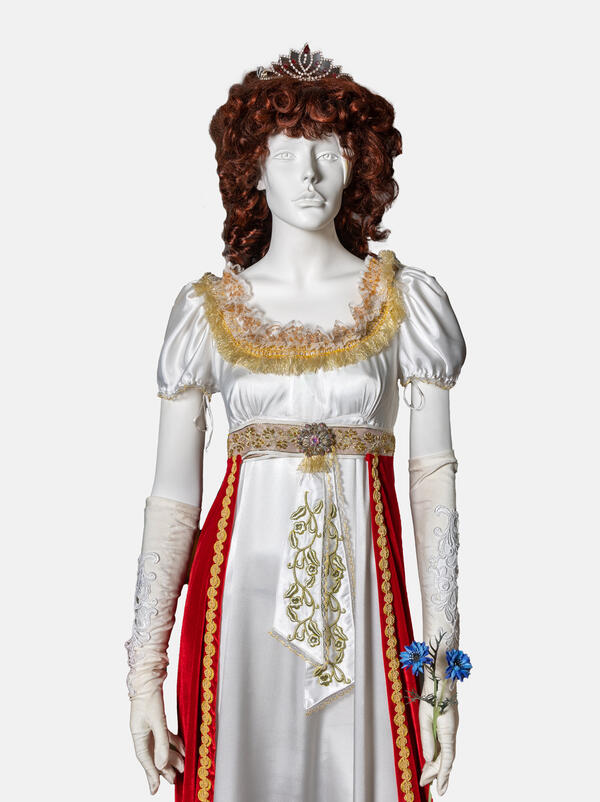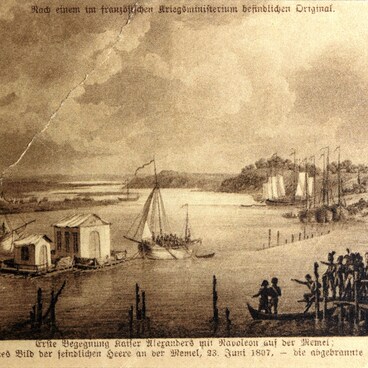The reconstructed outfit of Queen Louise of the early 19th century is stored in the subsidiary scientific collection of the Museum of the History of the City of Sovetsk. The exhibit consists of a dress, gloves, belt, tiara and a brooch with rhinestones.
Louise’s dress resembles a shirt and has a so-called empire silhouette, designed with reference to the Classical Greek peplos and chiton. The dress has a high waist and is tied under the chest with a belt with a cameo in the center. The dress is embroidered with green palm leaves and gold and silver thread in the lower part. The hem’s edge is trimmed with sequins. This elegant dress is meant for visits and dances, that is why it has short puffed sleeves.
The Empire style in art and fashion is associated with the name of Napoleon Bonaparte. It originated during the reign of Napoleon, and it is with his defeat that the decline of the Empire style in European art is connected: Empire means imperial. Napoleon believed that he had the power to revive the Roman Empire by conquering and uniting all of Europe. And it is the style of the Roman Empire that emerged in the art of France in the early 19th century. Empire clothing, as well as art, drew on Roman traditions. The Roman influence was especially noticeable in women’s dresses: shirt cut and high waistline, like those of Roman stolas, which in Rome were worn only by married women.
An Empire dress was a long
white garment with short, puffed sleeves that emphasized the shoulders, and
with an elevated waistline highlighted by a belt. The most
fashionable white dress of the time, made of light, often silk fabric, was usually
worn wet, so that the fabric fitted the body so
tightly that the female figure looked like the white marble columns of ancient
temples. In the cold climate this could result in the young ladies catching
pneumonia, which in those days could easily lead to death. However, in the
1810s, Empire dresses were gradually adapted for the European climate. They
were made of thicker and more expensive fabrics, for example, brocade or
velvet. The fabric was no longer exclusively white, but it was still mostly
monochrome. Dresses were embroidered; they now could have long sleeves; tails
disappeared and the skirt became bell-shaped and not very wide. Draperies were still of great importance. In those days, instead of the
“well-dressed”, a woman would be described as “well-draped”. Empire dresses were often complemented by long gloves and a string of pearls or small beads.



